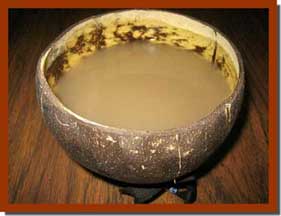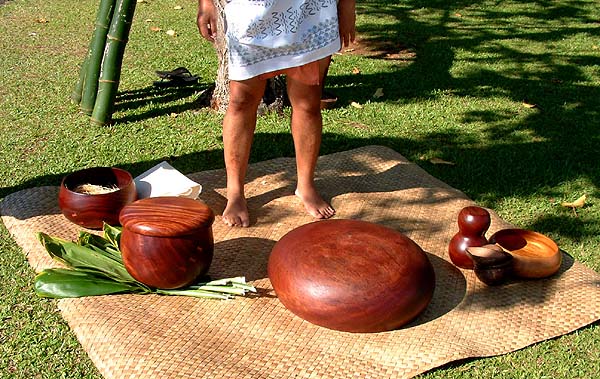
If drinking kava is not for you, try the supplement or capsule forms of kava. Mixing the awa with water is what makes the kavalactones potent. Sometimes the awa is put in a kalabash and warmed over hot stones, then cooled again before drinking. The strained liquid is what Islanders consume. In the beginning, awa was chewed to mix with saliva, then spit into a bowl. Awa is then mixed with water and strained. It is chopped into small pieces and pounded into a powder like form. Sometimes the root is sundried and used later. Most tea is made using the fresh root of the plant. Harvesting the root after a rain makes it easier to remove from the ground. There is a specific traditional preparation of kava. There are specific ways to prepare awa to drink. The rarer strands of Hawaiian awa are reserved for chiefs and village leaders. It has been noted that only the most common strands can be used by most people. Depending on the effect they wish to have, they know exactly which plants to harvest. Other strands include mahakea, mapulehu, mo’I, nene, opihikao, pana’ewa, papa ele ele, pap ele ele pup u, and papa kea.Įach of these strands has special characteristics that local farmers know well. Honokane iki is a tall green plant with few spots, while kumakua has internodes.

Another strand is called hiwa and it is a smooth stalk with black color.

It has purple nodules and spots all along the tall plant. The hardest strand to find of Hawaiian awa is called hanakapi’ai. There are distinct differences between the thirteen noble strands of awa. They spent much time mutating the plant until they found the most noble versions.Įventually, thirteen noble strands of Hawaiian awa were created that are of the best quality and still available today. If they did not like the effects, they quit growing that version. They would mix and match different strands of awa to create different chemotypes. They used the stems and leaves to propagate the plant. The Hawaiian natives found other ways to grow it. This type of plant was originally known as canoe plants.Īwa is extracted from the root of the piper methysticum plant, or pepper plant.ĭuring all the traveling and the years of moving through the Islands, the Hawaiian awa plant lost its ability to reproduce through seed. How Awa Came to HawaiiĪs Pacific Islanders traveled and settled in various parts of the South Pacific, they would take their most important plants with them. The meaning of awa in Hawaii is just as storied as its journey. It is used to ease tension and alleviate pain. Today awa is used for medicinal reasons as well as a social and ceremonial drink. Certain Gods are associated with the use of Hawaiian awa, offering blessings to crops, hunting, fishing and even unions between families. Awa, in the beginning, was mostly used for religious ceremonies.

Hawaiians have called it awa since it first came to Hawaii thousands of years ago.

It is called yaqona in Tonga, ‘ava in Samoa, sakau in Pohnpei, and malok in Vanuatu. Hawaiian awa has many different names, depending on the region in the Pacific Islands and the cultural background. Pronounced “ah-vah”, which means bitter, awa it is known as the Hawaiian kava drink.


 0 kommentar(er)
0 kommentar(er)
